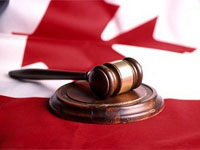NOTE: The following comes to us from a longtime reader that wishes to remain anonymous. He’s gifted us with some insightful posts in the past about the FDA, LLLT, and clinical trial regulations. His email is as follows:
—
The Journal of Sexual Medicine recently published an article that has been the source of several Balding Blog posts, including one that answered a reader who wondered if, “the study suggests up to 15% of men taking the drug might experience some form of sexual dysfunction” in context of “the warning label on Propecia (that) … only 2 percent of men might experience erectile dysfunction while using the drug…”.
As a fan of the Balding Blog and a clinical trialist (someone who interprets clinical trial data), and one who has no relationship to Merck or financial interest in finasteride use, I have reviewed the article:
- Dr. Rassman has correctly pointed out that this article is not a study per se, but a review of data in the literature from completed and published finasteride studies that included placebo groups.
- The review included 3 studies of men using finasteride (1 mg daily) for alopecia, 15 studies of men using finasteride (mainly 5 mg daily) for benign prostatic hyperplasia, and 2 for “none” listed as the condition.
- The 3 studies of men using finasteride for alopecia included a combined total of 1196 men receiving finasteride, and 1035 men receiving placebo.
- As Dr Rassman has nicely emphasized before, the “true†incidence of an adverse event (attributable to a drug) is the percentage of men who experience a side effect receiving an active drug minus the percentage of men who experience a side effect via placebo. It is important to emphasize that this equation implies no causality (i.e., if a man receiving a drug gets a side effect, it is attributable to his active drug or placebo regardless of other factors – such as diabetes – that may be causally involved).
- The largest incidence of sexual side effects among the 3 studies involving men with androgenic alopecia is from the smallest study involving only 286 men who received finasteride and were a considerably higher age (41-60 years) than men in the 2 other studies (ages 18-40 years). In older men, factors that contribute to sexual side effects (diabetes, coronary artery disease, and aging) are considerably more frequent. In this small study of 286 men, changes in sex drive were observed (over a period of 1 year of treatment and 1-year of follow-up) in 4.9% receiving finasteride and 4.4% receiving placebo (treatment effect of 0.5%). In the same study, erectile dysfunction was observed in 3.8% of men receiving finasteride and 0.7% of men receiving placebo (treatment effect of 3.1%). In the two larger studies – involving younger men – the incidence of erectile dysfunction was 0.5% (1.4 minus 0.9) in one study, and 0.75% (0.75% minus 0) in the other study.
- Taken together, these results are consistent with the incidence of sexual side effects noted in the finasteride (Propecia) US product label: decreased sex drive (1.8% finasteride vs. 1.3% placebo) and erectile dysfunction (1.3% vs. 0.7%).
- The “15%†figure contained in the Balding Blog post by a reader was based in part on the cited (and misleading) newspaper commentary from a business reporter that stated  up to 15% of men taking (Propecia) might experience some sort of sexual dysfunction.” Indeed, The Journal of Sexual Medicine article cites a study of 613 men aged 45-80 taking 5 mg finasteride daily for benign prostatic hypertrophy for 2 years. In this study, 15.8% of men receiving finasteride (compared with 6.3% of men receiving placebo) reported erectile dysfunction. This is 5 times the recommended dose for treating hair loss, though. The largest study, involving 2315 men aged 45 years or older (with prostate hypertrophy), showed the next largest effect on erectile dysfunction: 8.1% (finasteride) vs. 3.8% placebo. This latter figure is almost identical to the incidence of erectile dysfunction noted in the finasteride (Proscar) US label.
In summary, one can’t properly mix “apples and oranges†involving clinical trial data involving different doses of drugs with different patient populations and for different indications. The journal article offered no major insights to me but is a nice review of currently published work. To me, a significant issue of side effects is reversibility. Even a minor headache is devastating if due to an active drug and is not reversible.
Despite anecdotes from blogs, I have seen no case histories published in the medical literature of men using finasteride for androgenic alopecia who have developed irreversible erectile dysfunction that has been attributed to use of finasteride. I am not saying that such a phenomenon does not exist; I just have not read any well-documented case history. A newspaper commentary from a business writer that references a blog where a 32-year old man developed erectile dysfunction (“had pretty lousy quality erections otherwiseâ€) of unknown duration 12 years after starting finasteride and who cites “(recent) experiences with a new sexual partner†is not compelling (to me).
Tags: propecia, proscar, finasteride, merck, hairloss, hair loss, study
 It does not sound like your erections have been “tested in the field”. Just the absence of morning erections does not fit the “field test”. The libido issues certainly could’ve been prompted from psyching yourself up about side effects, but it would be impossible for me to say one way or the other. I don’t know how old you are or anything about your medical history, but there’s some info at WebMD that you might find interesting.
It does not sound like your erections have been “tested in the field”. Just the absence of morning erections does not fit the “field test”. The libido issues certainly could’ve been prompted from psyching yourself up about side effects, but it would be impossible for me to say one way or the other. I don’t know how old you are or anything about your medical history, but there’s some info at WebMD that you might find interesting.
 I enjoy a good conspiracy as much as the next guy, but come on…
I enjoy a good conspiracy as much as the next guy, but come on… You’re right that once you discontinue Propecia (finasteride 1mg) treatment, your hair loss resumes. For me though, since I originally had crown loss, I tried finasteride to see if I could increase the hair in the crown. At that point, my crown was clearly stable and I did not gain anything from the finasteride.
You’re right that once you discontinue Propecia (finasteride 1mg) treatment, your hair loss resumes. For me though, since I originally had crown loss, I tried finasteride to see if I could increase the hair in the crown. At that point, my crown was clearly stable and I did not gain anything from the finasteride. I don’t recommend Viviscal, as it hasn’t been proven to my satisfaction to treat hair loss. It also isn’t FDA approved, as it is just regarded as an over the counter supplement. The key ingredient appears to be a marine protein extract, so if you’ve got a fish allergy you should steer clear. Another key ingredient is vitamin C. While the product might help nourish your hair, I don’t know that it would treat hair loss, particularly if it is genetic in nature. Otherwise if you wish to use it, that is your choice to make.
I don’t recommend Viviscal, as it hasn’t been proven to my satisfaction to treat hair loss. It also isn’t FDA approved, as it is just regarded as an over the counter supplement. The key ingredient appears to be a marine protein extract, so if you’ve got a fish allergy you should steer clear. Another key ingredient is vitamin C. While the product might help nourish your hair, I don’t know that it would treat hair loss, particularly if it is genetic in nature. Otherwise if you wish to use it, that is your choice to make. Read the full story —
Read the full story —